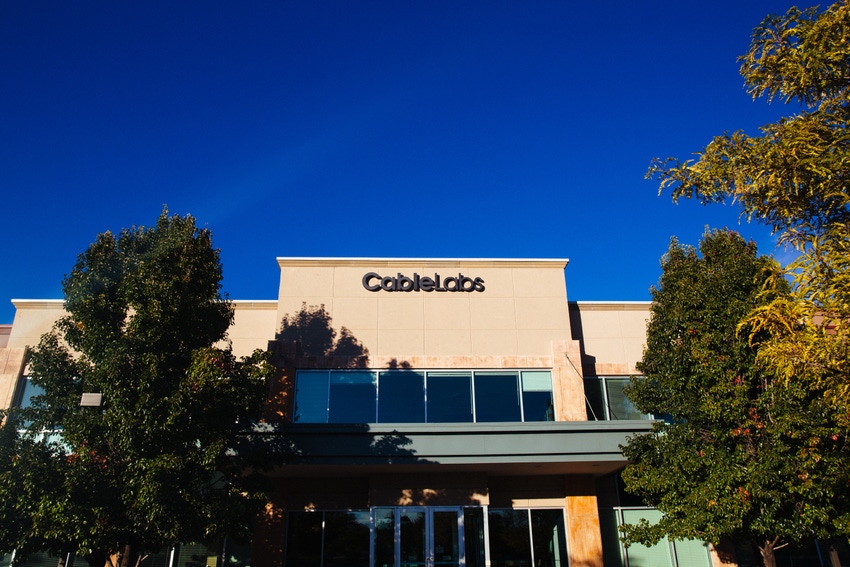CableLabs gets 'laser focused on FTTP'
CableLabs has launched a pair of fiber-focused working groups, including one that will explore a DOCSIS framework for provisioning ITU-based PON standards, including XGS-PON.

CableLabs remains focused on DOCSIS 4.0, the next generation broadband technology for widely deployed hybrid fiber/coax (HFC) networks. But fiber-to-the-premises (FTTP) technologies and standards have likewise climbed the charts to become top priorities at the Louisville, Colorado-based organization as FTTP becomes increasingly important to cable operator network strategies.
Most North American cable operators are looking to upgrade their existing HFC plant to a new distributed access architecture (DAA) that paves the way to D4.0. But many are also using FTTP in targeted situations – largely in greenfields and for rural, government-subsidized network buildouts. Cable's move to DAA is also putting operators in position to run a fiber from their new nodes to customers who want or require FTTP performance.
Meanwhile, FTTP is becoming an even more prominent strategy for some operators in Europe. Liberty Global, for example, is implementing FTTP overlays in several markets, including the UK, a move that will effectively leap over DOCSIS 4.0 in many instances.
Against this backdrop, CableLabs recently launched a pair of fiber-oriented working groups, including one focused on optical operations and maintenance, and another focused on specifying a DOCSIS framework for the provisioning ITU-based PON technology, including 10-Gig-capable XGS-PON.
"We continue to be focused on DOCSIS 4.0 technology solutions as operators begin deployments, but now we're also getting laser-focused on FTTP," Curtis Knittle, VP of wired technologies research and development at CableLabs, explained in this blog post about the new initiative.
That work will center on "six pillars" of activity: provisioning and integration; ecosystem management, strategic guidance, interoperability, next-gen PON and convergence.
'Very high priority' for CableLabs
That work is also coming together as the cable industry looks to expand its involvement with FTTP technologies. Historically, cable operators have used EPON for the vast majority of their FTTP deployments. But cable ops have also expressed interest in utilizing ITU-based PON standards, with an initial focus on 10-Gig-capable XGS-PON.
"While the cable industry has had a strong foothold in the IEEE world, they are starting and wanting to get more involved in ITU PON technologies and add that to the plethora of options they have today," Jon Schnoor, lead architect at CableLabs, tells Light Reading. "This is a very high priority going forward for CableLabs and the industry in general."
A big focus, Schnoor said, is to pave a path toward "coexistence" between HFC and various flavors of PON. That includes a potential role for virtualization while also casting an eye toward next-gen 25-Gig and 50-Gig PON technologies, as well as CableLabs' own efforts focused on coherent PON.
Provisioning is another major aspect of this new work. CableLabs and its partners have already developed (and cable operators have already deployed) systems based on specs that graft DOCSIS-style provisioning to EPON networks – something called DOCSIS provisioning of EPON (DPoE). CableLabs has also developed a version of that for GPON, but it has yet to be deployed, according to Schnoor.
As for next steps related to how PON provisioning can hook into cable's systems, CableLabs is leaving that door open on whether it can apply existing technologies or create something new. It won't dictate that approach.
"We are looking at options. If it comes out of the discussion that we should be developing a framework for DOCSIS provisioning of XGS-PON, we're going to do that," Schnoor said. "If we don't do that, what is the right path to take to as far as implementing and integrating a PON technology into an operator's network? We want to reduce the cost to implement and deploy those solutions. If that is a DOCSIS provisioning with a translation layer in there, we'll do that."
The new working groups will also aim to ensure that devices built to ITU standards are interoperable so that operators can pick from multiple suppliers of optical network terminals (ONTs), optical network units (ONUs) and optical line terminals (OLTs).
Schnoor said he expects some of that work to lead to best practices, tech reports and, ultimately, to interoperability events that would involve a wide range of PON products and suppliers.
Expanding cable's influence in FTTP
CableLabs is also looking to work more closely with industry and standard-setting organizations tied into the FTTP ecosystem. CableLabs, for example, is already involved in the Broadband Forum.
"We'll have some ecosystem engagement and monitor and participate in different groups. We want to make sure cable's influence is taken seriously," Schnoor said.
He points out that, even outside of cable's relatively targeted use of FTTP, the vast majority of the industry's HFC network is comprised of fiber. By way of example, CableLabs estimates that 99.96% of a packet's journey from Shaw Communications (now part of Rogers Communications) in Vancouver, Canada, to Mediacom Communications in Ames, Iowa, is over fiber.
Schnoor is heading up the working group exploring a DOCSIS framework ITU-based PON technology provisioning. Jason Rupe, a distinguished technologist at CableLabs, is heading up the optical operations and maintenance working group.
Schnoor said he and Rupe have already signed on dozens of participants for both working groups, with some suppliers and operators involved in both.
About the Author(s)
You May Also Like












